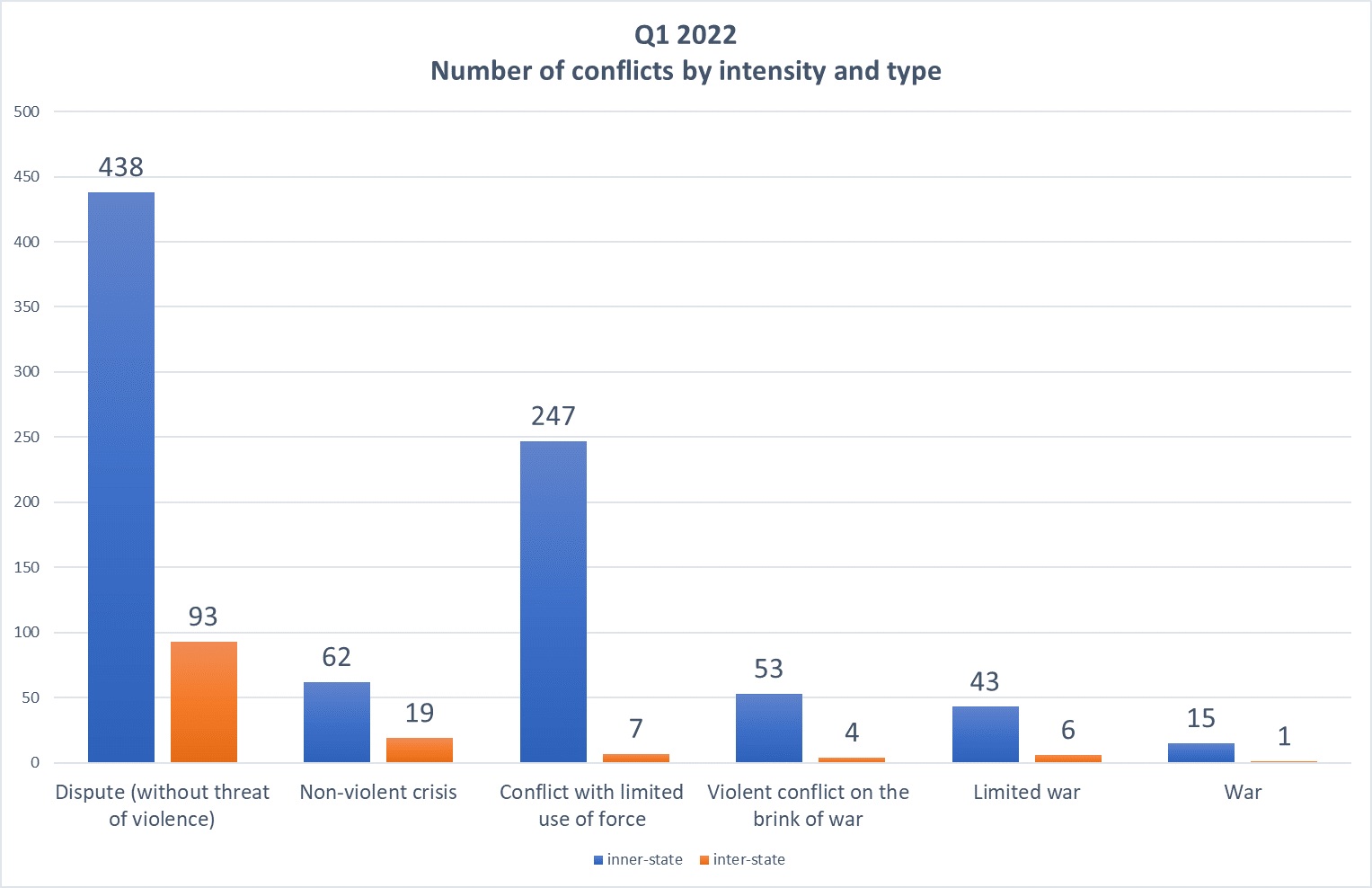Before we present the new figures for the second quarter of 2022 in just a few weeks, we would like to take another look at the global conflict situation in the first quarter of 2022, i.e. the months of January to March. This period was dominated by the reporting on Russia's war against Ukraine, which was in violation of international law, and its preparations.
This left little time and space in the mainstream news programs for the crises in and between many other countries in the world. Thus, even experts are constantly surprised by the number of political crises taking place simultaneously. The analysis unit of MBI CONIAS Risk Intelligence observed 15 additional wars (conflicts at the highest intensity level) during this period. These include, for example, the wars that have been going on for some time in the DR Congo, Mali, Myanmar and Nigeria. With the exception of the war between Russia and Ukraine, all conflicts were internal.

In addition, 49 other conflicts – some of them highly violent – were observed, which are referred to as limited wars in the CONIAS classification due to the limited size of the personnel and weapons used compared to war. Some of them took place in countries such as Iraq, Ethiopia, Afghanistan, Morocco, the Central African Republic, and Benin. The fact that interstate conflicts can also be found in this second-highest category of the CONIAS model receives hardly any attention from the media. Examples of this include disputes between Afghanistan and Pakistan or the highly explosive constellation of Iran and Israel.
Particularly problematic in all of these conflicts is the potential that the violence used in this context can make foreign economic activity extremely difficult or, in some cases, prevent it completely. For this reason, the MBI CONIAS approach not only classifies acute, highly violent conflicts but also observes those political controversies that have similarities to earlier wars but are not or not yet on a warlike scale. Thus, risk areas can be identified and decision-makers can be supported in their handling of these risk areas with empirical data.
Our analyses show that political conflicts below the threshold of war represent the clear majority of the political conflicts observed. More than 93% of the conflicts monitored by CONIAS have the potential to escalate into war – or the conflicts harbor other political risks, such as a threat of sanctions.
If you would like to learn more about MBI CONIAS Risk Intelligence data and data products or political risks in general, feel free to contact our team of experts. In our MBI CONIAS Academy you can learn everything about the types and classifications of political risks, their analysis and how to effectively set up risk management for your company.
About the author:
Dr. Nicolas Schwank
CONIAS Risk Intelligence
Michael Bauer International GmbH


